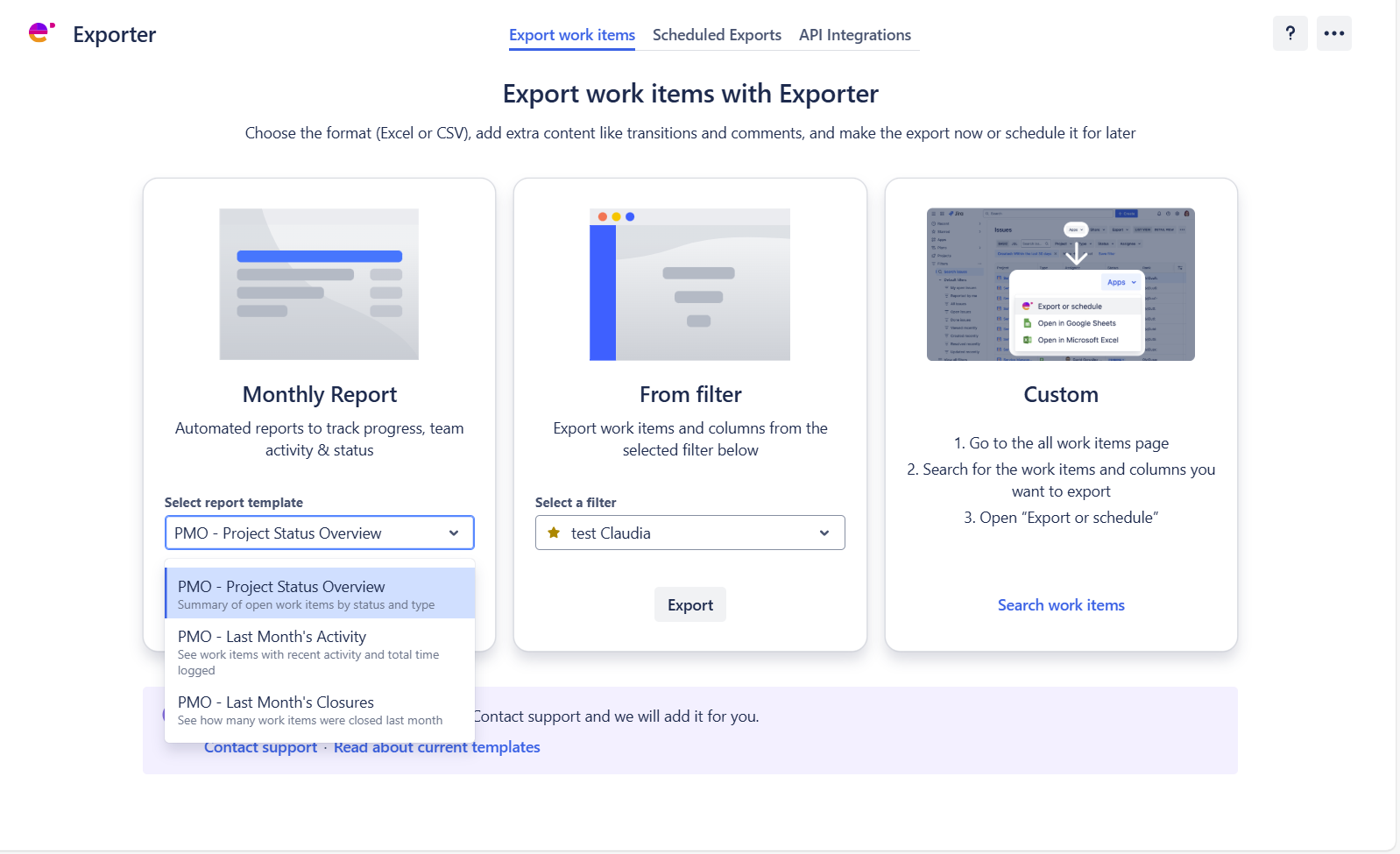
Giving more visibility to your project data it’s usually a driver to start making better decisions, of course. That data needs to be well structured and rich. That’s why in this blog post, you’ll learn how incorporating monthly reports into your PMO strategy will bring clarity to team progress, accelerate decision-making, and give executives actionable insights without digging further.
For many teams, reporting it's usually a burden. This happens because of siloed and scattered data across different systems and disconnected workflows, eating up hours at the end of every month, or in some cases, every Monday... you can relate to this struggle, right?
The scenario goes down to managers chasing down numbers, admins manually searching and exporting a specific filter of work items (not being sure what, why, or to whom!), and C-Levels waiting to get a clear picture of what actually happened, which probably they won't accurately get… to later on, start all over again. The irony of this workflow is that all this effort goes around pieces of structured data and metadata that already exist where the work is happening: Jira.
The main problem is that this data is not accessible in a way that makes the decision making process easier.
In every organization, projects are a source of continuous streams of information, such as progress updates, task completions, risks, etc.
In the end, these are performance metrics useful to evaluate project health and evolution. Without a proper data structure and a proper flow in place, this data disappears or even becomes difficult to extract because it’s scattered across tools, emails, and conversations. To solve that, monthly reports are the mechanism that turns that chaos into a way to keep control of your projects.
A monthly report is a structured summary that captures key project activities, relevant dates, SLAs (depending on what’s important), and outcomes over a specific month. It helps teams look back at what was achieved, what went off track, and where efforts should focus next.
Unlike regular updates, these reports provide consistency across the development of the process, an audit for the right matters, that reflects the same data and cadence but across time with a clear timeline for reflection and decision-making, ensuring adjustments and enhancements to following sprints or projects.
The data every project produces tells a story. It’s just a matter of focusing it right, and a proper monthly reporting strategy in place avoids that story going untold. These regular reports help teams connect effort to results and leaders to make decisions with confidence. Here’s more specifically why these are important:
If you’re running your projects in Jira, and you’re interested in getting these reports, unfortunately, there’s not a simple way to easily generate fully automated and robust monthly reports based on project activity’s minimal expression: work items. This gets even more complicated if you’re looking to get this data with its full metadata, such as comments, transitions, attachments, and SLAs (given the case).
What you can do by default in Jira is:
As you can see, there are ways, still a bit rudimentary, to access project detailed monthly reporting in Jira using saved filters, dashboards, and subscriptions, but you’ll face limitations in automation, metadata completeness, and format flexibility.
At this event, you could learn about different ways to handle your data in Jira:
For full monthly reports properly exported, based on automations, and ready for project audits, you’ll likely need a custom build or Marketplace app solution.
To make project managers, program managers, the overall PMO, and C-Levels keep track of this monthly data flow going, with a minimal investment of their productivity, instead of building custom filters or navigating through Jira’s complexity, it’s possible to have them automatically generated.
By following the Exporter for Jira app, available in the Atlassian Marketplace, it’s possible to schedule monthly reports based on predefined templates tailored for this precise data, relevant for the PMO.
By taking advantage of Exporter’s monthly reports, you’ll get predefined filters that will ensure portfolio oversight, team performance, and project visibility.

Exporter for Jira is a data machine that helps you to get your data out of Jira as your PMO needs it
These reports are delivered monthly in your preferred format (Excel or CSV) to your email inbox, giving you a reliable overview of your work without manual effort.
Currently, Exporter for Jira's monthly reports has three predefined templates which, once configured, will provide project-specific information aimed at targeting the previously mentioned stakeholders:
Each of these reports is easy to configure and delivered to your email inbox, where you’ll be able to download from Jira, and later on, depending on the format, work richer reports in spreadsheets, and more importantly, the possibility to share them with external stakeholders.
The challenge with traditional reporting lies in the manual effort. Teams spend hours gathering data, cleaning it, and formatting updates instead of analyzing it or even getting it with minimal effort and working with it further. Automating monthly reports it’s a solution that Exporter for Jira enables by eliminating bottlenecks and rework.
Automation ensures reports are consistent, accurate, and always delivered on schedule with the same data. It allows teams to focus their energy on understanding what the data means, not just collecting it. Over time, this leads to faster insights, improved forecasting, and a more agile response to project dynamics.
In essence, monthly reports are not just documentation; they’re a decision-making tool. They connect effort to impact, create alignment between teams and leadership, and enable organizations to evolve intelligently with each iteration.
When automated, they become the invisible engine that keeps projects transparent, measurable, and strategically aligned across the PMO, month after month.

Monthly reporting with Exporter for Jira turns static data into strategic intelligence. Whether you’re a project manager making tactical calls, a data manager integrating insights, or a PMO driving organizational strategy, these reports put visibility and clarity at the center of your operations.
Stop collecting data manually, and start making smarter, faster decisions with automated monthly reports from Jira with Exporter.
These Stories on Project Management
No Comments Yet
Let us know what you think